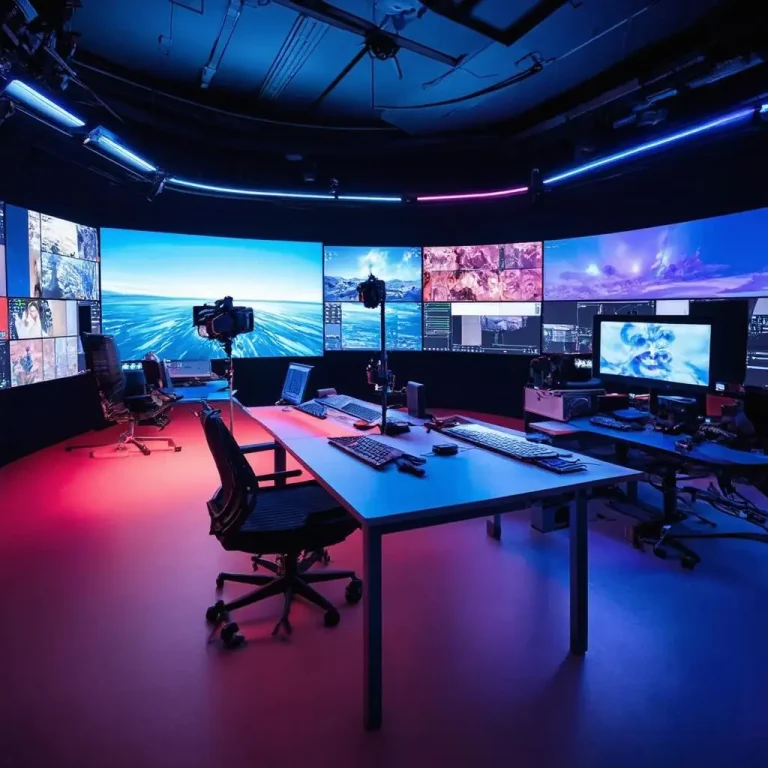The integration of artificial intelligence (AI) into various facets of media technology is more than just a trend; it’s a revolution that is reshaping how professionals approach post-production. By streamlining workflows and boosting efficiency, AI is becoming an indispensable tool for editors and colorists who seek to enhance production quality and speed. This post delves into the latest AI tools available, spotlighting real-world case studies that underscore AI’s transformative impact on the industry.
AI Tools Transforming Post-Production
AI technology offers an impressive array of tools that cater to the unique demands of post-production. These innovations go beyond simple automation. For editors and colorists, AI can provide:
-
Enhanced Editing Workflows: AI-driven software can automate time-consuming tasks such as sorting through footage, recognizing faces, and organizing clips. This allows editors to focus on the creative aspects of their work. For example, AI can suggest cuts or identify the best takes based on continuity and scene dynamics.
-
Smart Color Correction and Grading: AI tools can analyze visual elements of footage and apply sophisticated color grading patterns that replicate industry standards or unique styles. AI algorithms can match colors across different shots with precision, maintaining consistency throughout the production.
-
Efficient Audio Post-Production: AI can significantly improve audio editing by cleaning up background noise, balancing sound levels, and enhancing the clarity and quality of voice recordings. Machine learning algorithms can even generate sound effects, filling in audio missing from the original footage.
Case Studies: AI in Action
Several case studies illuminate the tangible benefits AI brings to post-production processes:
-
Studio X’s Film Editing: By adopting AI-driven editing tools, Studio X reduced its editing time by 40%. The AI software enabled the team to swiftly navigate through massive amounts of footage, identifying the most compelling shots for the final cut. This efficiency gain allowed more time for fine-tuning and creative exploration.
-
Colorists at Creative Vision: At Creative Vision, AI tools were employed to harmonize the color palette of a major commercial campaign. The AI analyzed the desired aesthetic, automatically adjusting scenes to ensure a consistent and pleasing color scheme across varied lighting conditions. This not only saved countless hours but also elevated the final product’s visual appeal.
-
Documentary Sound Enhancement: Utilizing AI, a documentary production crew enhanced audio quality by filtering out ambient noise and perfecting voice clarity, which was critical for interviews conducted in challenging environments. This AI-driven approach ensured that the sound seamlessly complemented the documentary’s storytelling without extensive manual adjustments.
The Future of AI in Post-Production
The role of AI in post-production is poised for significant growth as technology continues to evolve. With new developments, AI will likely enhance its ability to support creative decision-making, offer predictive insights, and even propose innovative storytelling elements. The inevitable advancements in machine learning and data processing will further refine AI’s capacity to adapt to the artistic nuances that define high-quality productions.
Conclusion
AI-driven editing is not just about speed or efficiency; it’s about redefining the creative frontier in post-production. By allowing professionals to focus more on the artistic aspects rather than the mechanical, AI empowers content creators to elevate their projects to new heights. As the industry embraces these technological advancements, the full potential of AI in transforming post-production processes becomes increasingly apparent. Broadcast Beat remains committed to providing insights into these revolutionary tools, supporting media professionals as they navigate the evolving landscape of media technology.
- Revolutionizing Post-Production: The Role of AI and Machine Learning - October 20, 2024
- From Concept to Screen: The Crucial Role of Industry Events in Shaping Broadcast Futures - October 19, 2024
- Embracing Innovation: The Future of Broadcasting - October 18, 2024















